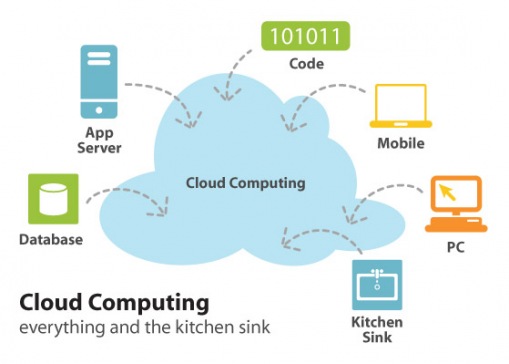Software as a Service for Design and Construction - Building in "The Cloud"
Video
alt=""What is "cloud computing" or "software as a service", and what do these terms mean for the AEC industry? While many people have heard of the term "cloud computing", or can conceptualize how working online can be considered working in "the cloud", many in the design and construction industry are still unclear about what this means for the future of our work.

Cloud computing itself can be difficult to define, but in general, it is using resources through the Internet to create a flexible environment that can add additional computing power as needed without investments in expensive in-house hardware and software. In addition to its flexibility, cloud computing allows for greater levels of collaboration between users, a huge advantage to multi-disciplinary teams. Here is an example of twenty-one different technology experts each providing their own definition of cloud computing. One of the definitions that caught my attention was this one (credited to Jeff Kaplan):
“Cloud computing [is] a broad array of web-based services aimed at allowing users to obtain a wide range of functional capabilities on a 'pay-as-you-go' basis that previously required tremendous hardware/software investments and professional skills to acquire."
Software as a Service (SaaS) is a particular subset of cloud computing that allows individuals and companies to lease software and access it through the Internet without installing it on local IT hardware and without purchasing a local version that will be out of date and need replaced in a few years anyway.
Software as a Service is a major movement in the software industry as a whole, and due to the reduced costs and increased efficiencies, it simply makes sense for many applications. There are fifteen major publicly traded SaaS companies, thousands of smaller providers, Microsoft has recently launched new web-based versions of their standard Office products, the federal government has launched a major expansion into use of SaaS, and a recent study suggests that 20% of all private companies will own no in-house IT resources by 2012 as SaaS and other cloud offerings become increasingly more prevalent.
 Unfortunately, while government, finance, and other sectors are moving quickly to take advantage of the benefits offered by cloud computing and SaaS systems, the AEC industry is still in the very early stages of learning about the opportunity this technology shift presents. While the results are clearly unscientific, I did my own quick assessment of AEC industry knowledge about this technology change while I was traveling and speaking at regional AIA conferences last fall. At each presentation, as part of my introductory questions, I would ask the audience members, "Please raise your hand if you have heard of the term Software as a Service before". Out of several hundred architects that I spoke with in those presentations, I never saw anyone raise their hand.
Unfortunately, while government, finance, and other sectors are moving quickly to take advantage of the benefits offered by cloud computing and SaaS systems, the AEC industry is still in the very early stages of learning about the opportunity this technology shift presents. While the results are clearly unscientific, I did my own quick assessment of AEC industry knowledge about this technology change while I was traveling and speaking at regional AIA conferences last fall. At each presentation, as part of my introductory questions, I would ask the audience members, "Please raise your hand if you have heard of the term Software as a Service before". Out of several hundred architects that I spoke with in those presentations, I never saw anyone raise their hand.
The design and construction industry, like most industries, has a major reliance on software to run its businesses and projects, so while the coming of cloud computing for AEC may be slow, it will happen. Major opportunities exist to deliver CAD, BIM, and other design software in a SaaS format, and major industry leaders are just beginning to acknowledge this. In addition, with an increased industry focus on Integrated Project Delivery, software services like Integrated Project Collaboration systems can improve the ways that project teams partner together and communicate with each other.

Matt Ostanik, AIA, CSI, LEED AP
Matt is a licensed architect and the president and founder of Submittal Exchange, a comprehensive online system for architects, engineers, contractors, construction managers, and facility owners to exchange, review, and archive construction submittals, requests for information (RFIs), and other construction communications electronically. He provides coverage of advances in software, cloud computing, and information portability specific to the AEC industry for Buildipedia.com.

